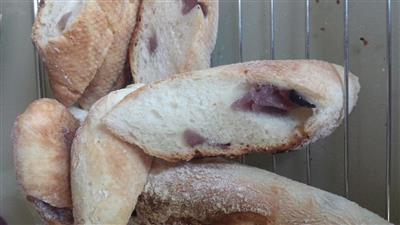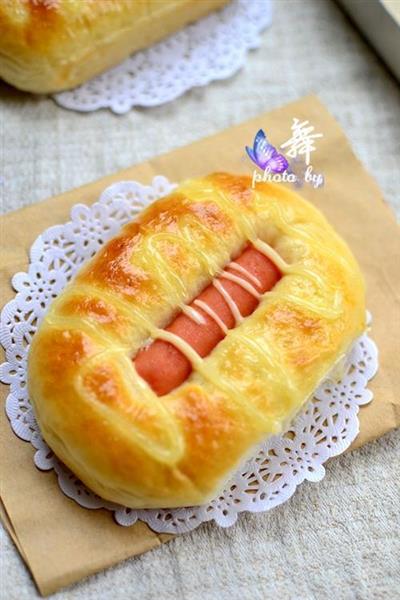Tea and tea bags
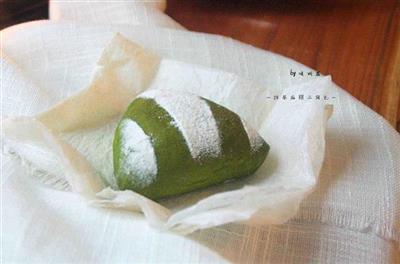
(A for the filling, B for the bread) This bread is made for spring.To better preserve and emphasize the flavor of matcha, no eggs are added to the bread.So, this bread is also suitable for students who are allergic to eggs.The sweetness of dried cranberries and the sweetness of matcha are a good combination.In addition to the taste of the paralyzed meat, it is also decorated with flowers.In terms of design, it was inspired by the work of a predecessor I had seen before.This triangular bread, full of Japanese flavor, also goes well with matcha, parsley, and dried cranberries.The outer skin is fresh and soft, the inner filling is sweet and smooth, so use this matcha and parsley triangle package to welcome the approaching spring!
WHAT YOU NEED
Ingredients
90 grams of glutinous rice10 grams of rice flour (A)Dried cranberries (A) 30 gMilk (A) 180 gramsHigh starch flour (B) 242 g8 grams of tea powder (B)Milk (B) 155 gramsQuick-drying yeast (B) 3 gFine sugar (A) 15 g12 grams of odorless liquid oil (A)Unsalted butter (B) 15 gFine sugar (B) 25 gSalt (B) 3 g
How TO MADE Tea and tea bags
Steps 1 to 4
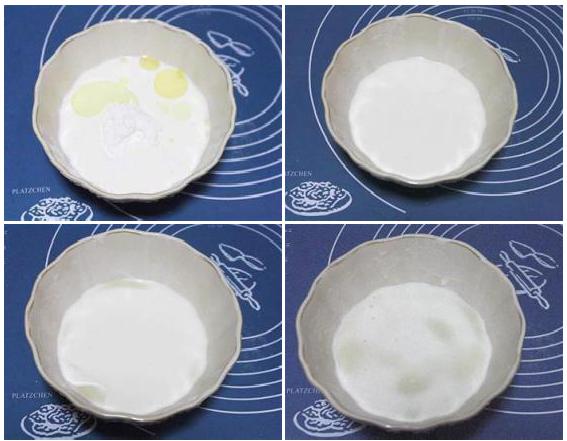
1. Mix other ingredients in the filling other than dried cranberries;
2. Stir evenly until there are no oil flowers and powdery particles, cover with a preservative film and let stand for 15 to 30 minutes;
3. Put it in the microwave for one minute.
4. After removing the mixture, cover it with a preservative film and heat it again for one minute;
Steps 5 to 8
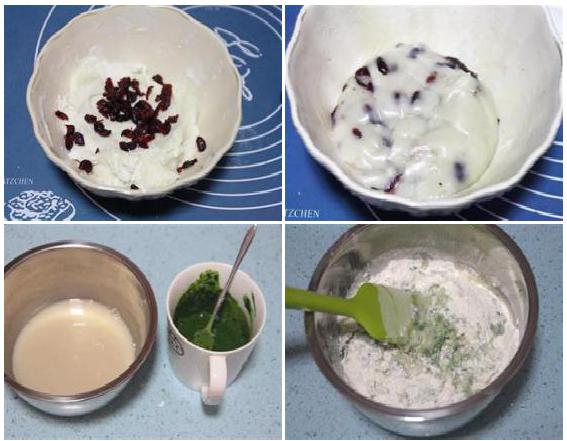
5. Remove the mixture and add the dried cranberries to the mixture.
6. Cover with a preservative film and continue to heat for one minute.
7. If it's completely transparent, it's cooked, and if it's cooked, it's cooked.
8. If there is still a white part, continue heating until completely transparent.
Steps 9 to 12
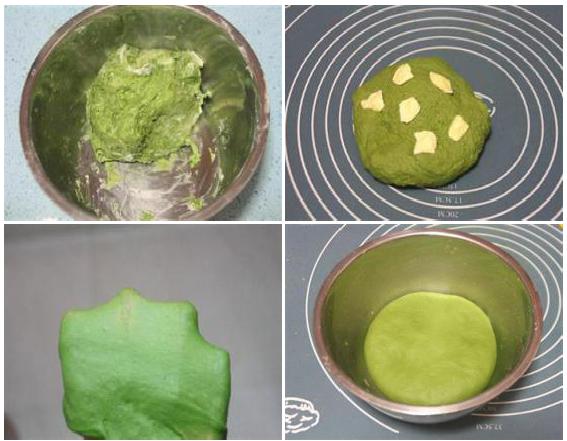
9. After completion, cooling backup.
10. Dissolve the dry yeast in 100 g of milk (not more than 35 degrees) and mix the remaining milk evenly with the tea powder;
11. Add both solutions to the powder mixture;
12. Mix with a knife until there is no dry powder;
Steps 13 to 16

13. Transfer to a silicone pad, knead into a smooth dough, and add the butter for cutting;
14. Continue to rub until a thinner film can be pulled out (extending almost completely);
15. The dough is placed in a container, covered with a preservative film, and left to ferment in a warm place.
16. In case of cold room temperatures in winter, the fermentation function of the oven can be used;
Steps 17 to 20
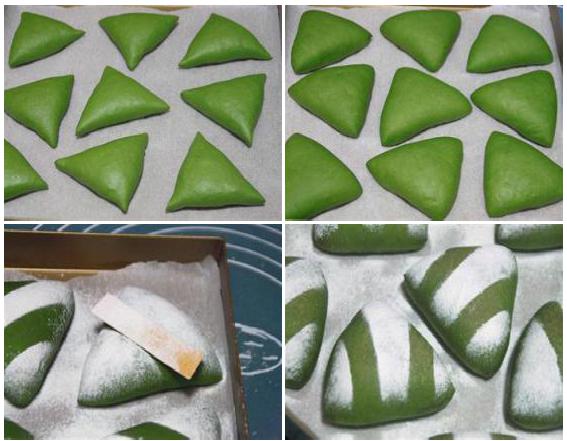
17. After about an hour, the dough is fermented to twice its original size, and the base fermentation is completed without shrinking or collapsing.
18. Remove the dough, disinfect it, divide it into 10 equal-sized pieces, roll it, cover it with a preservative film, and set it at room temperature for 15 minutes;
19. Take a small, settled dough, press it flat with your palm, and put a bunch of stuffing on it, my stuffing is about 20 grams per bunch;
20. In a triangular package, the filling is wrapped in a cloth and squeezed tightly;
Steps 21 to 24
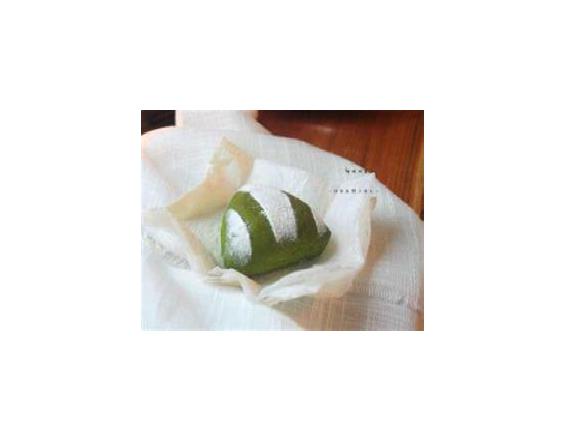
21. The finished bread embryos are placed in a baking tray (pre-coated with baking paper) and then placed in a warm, moist place for a second fermentation.
22. In winter, the room temperature is lower and the fermentation function of the oven can be used;
23. After about 40 to 50 minutes, the dough is fermented to 1.5 to 2 times its size, gently pressed on the surface with your thumb, and the dough is slowly rolled back;
24. Preheat the oven to 210 degrees.
25. Cut a small piece of paper and screen the pattern on the surface of the bread;
26. After preheating, the bread is placed in the oven, in the middle and bottom layers, on high heat, 200 degrees, baked for 15 to 20 minutes;
27. Immediately after baking, the bread is removed from the oven and transferred to a drying net to cool, so that it can be sealed and stored or eaten.
28.
Handy cooking tips
The amount of glutinous rice flour and glutinous rice flour in the parsley filling can be adjusted according to your preference.The more sticky rice flour, the softer it gets.The more glutinous rice flour, the better the stickiness; 2. When the filling is heated, it should be heated several times, and after each heating it should be stirred evenly; 3. The dough can only be stirred to the expanded state, not to the full state; 4. The time of fermentation of the dough should be adjusted according to the actual situation.It should be noted that when baking, do not overdo it; 5. when taking the filling in clumps, if you feel sticky, you can put a little dry powder or clean water on your hands, a little, do not do more; 6. the specific baking time should be adjusted according to the characteristics of each oven.The bread expands in volume, the dough is very elastic, and the sound of the dough is that it is cooked.
REACTION RECIPES
- Okinawan black sugar and cardamom cookies
- Milk cubes - pocket health biscuits
- Chocolate beans and biscuits
- Nuts and seeds
- Fingers crossed
- Minted Margaret cookies
- Snack bags
- Chocolate cookies
- The cookie.
- Tea protein cream cookies
- Chocolate chip cookies
- Oatmeal cake
- Cream and soda biscuits
- Onion oil cookies
- Cream cookies
MOST POPULAR RECIPES
- Rose cookies
- Margaret's cookies
- The Magic Bar
- It's a small animal cookie.
- Oatmeal cookies
- Butter and biscuits
- Happy fruit cake
- I love the chocolate chip cookies.
- Dress biscuits
- The monkey cookie.
- Fruit cake
- Homemade chocolate cookies
- Afternoon tea cookies
- Homemade cookies made by hand
- Pocky finger cookies
RECIPE TAGS:
-
90 grams of glutinous rice10 grams of rice flour (A)Dried cranberries (A) 30 gMilk (A) 180 gramsHigh starch flour (B) 242 g8 grams of tea powder (B)Milk (B) 155 gramsQuick-drying yeast (B) 3 gFine sugar (A) 15 g12 grams of odorless liquid oil (A)Unsalted butter (B) 15 gFine sugar (B) 25 gSalt (B) 3 g

 DESSERTS
DESSERTS  BAKING
BAKING  MAIN DISHES
MAIN DISHES  SNACKS
SNACKS  CHINESE FOOD
CHINESE FOOD  HOME
HOME




